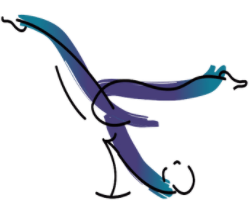Reformer vs Tower: Which is Best for You?
When diving into the world of Pilates, you may find yourself wondering whether to choose the Pilates Reformer or the Pilates Tower. Both offer unique benefits and can enhance your practice in different ways. Let’s break down the differences to help you decide which is best for you.
What is the Pilates Tower?
The Pilates Tower, also known as the half trapeze, is a versatile piece of equipment inspired by Joseph Pilates' adaptation of a bed frame with springs attached to support or challenge traditional matwork. The tower can be used in group classes, and almost all the trapeze repertoire can be performed on it. Similar to the Reformer, the Tower uses adjustable springs for resistance, providing both support and challenge. Some Pilates Reformers can convert to a Tower with an added mat and the addition of the tower frame. The Tower features a spring bar and a push-through bar that can be sprung from the top or the bottom, as well as springs with hand/foot loops attached.
How Are Pilates Tower Classes Different from Reformer Classes?
Tower classes allow your body to move in completely different ways, offering a unique experience. The angle of pull on the springs differs from that of the Reformer, making familiar exercises, such as feet in straps, feel different and target various muscles. The Tower is excellent for achieving an amazing stretch, with feedback from our classes highlighting its superior stretching capability. It’s also fantastic for working on spinal mobility and can assist with mastering moves like the roll-up and teaser by providing assistance through the movement.
What Can You Expect in a Tower Class?
Tower classes combine elements of matwork with the tower springs to add challenge, facilitate, and assist movement. Similar to our Reformer classes, you’ll get a full-body workout with plenty of core work. A Pilates Tower class covers all major muscle groups, focusing on muscular endurance, spinal mobility, and flexibility. The Tower provides an exceptional stretch and offers great opportunities to challenge your balance. Many exercises from Pilates Reformer classes, such as short spine, bridging, feet in straps, swan, and teaser, can also be performed in Tower classes, though they will feel different on each piece of equipment.
What’s Better for Me: Pilates Tower or Pilates Reformer?
As Pilates enthusiasts, we say both! The Tower allows you to move your body in new ways, making it an excellent addition to shake up your Pilates practice. Learning an exercise like feet in straps on the Tower can provide new insights, enhancing your experience and effectiveness when you return to the Reformer.

